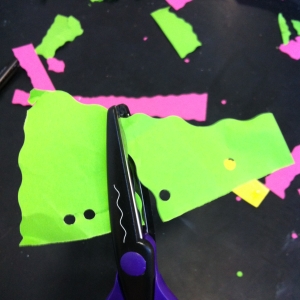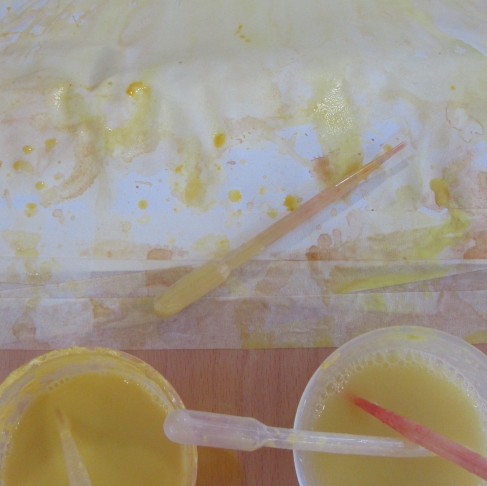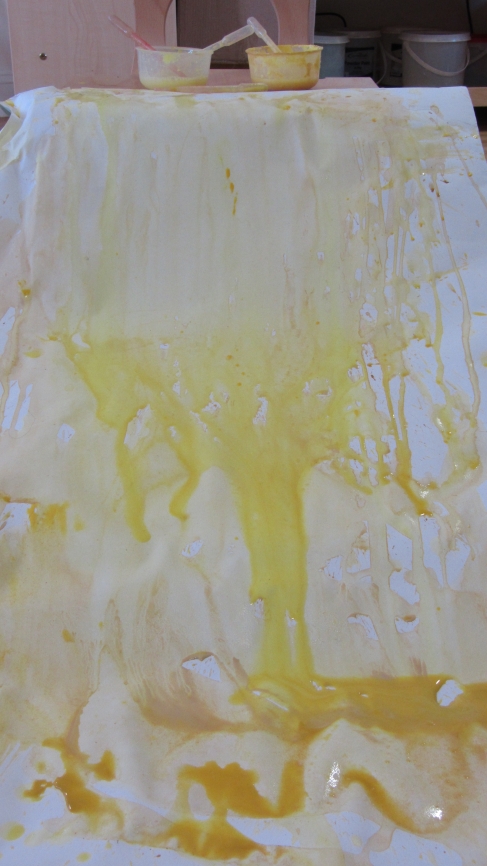Recently in Eyes Pie Art Lessons, children in a few South London nurseries have been exploring print making. We have looked by prints by artists through the ages, including Katsushika Hokusai’s woodblock print of a great big wave, Andy Warhol’s screen prints of Marylin Monroe, Tracey Emin’s monoprints of birds and a potato print of Abraham Lincoln by Corey McAbee. Two key elements of printing that we have been learning about are that you can make lots of pictures of the same thing and remake the exact same picture in different colours. We noticed that the prints that we make are usually the mirror image of the thing we used to print with.
We started this topic with an exploration of the sorts of marks you can make with different tools. We used potato mashers, meat tenderisers, lids, pine cones, combs, forks and stick to make marks in slabs of soft dough or clay .
 We then used the same tools to make prints on paper using paint. Having repeated our marks in the dough/clay, this time we focussed on the different colours that we could use.
We then used the same tools to make prints on paper using paint. Having repeated our marks in the dough/clay, this time we focussed on the different colours that we could use.
Meanwhile, in one nursery a girl practicing to use scissors got her paper stuck between the blades. This, she realised, looked just like a butterfly.
 So of course we used the printing equipment that we had out to make some butterfly prints. We folded the paper in half and then unfolded it and printed shapes on one side (mostly) of the paper. When we folded the paper over again and then unfolded it we found that “there’s more!” as hte prints we’d made on one side trasnferred some of their paint to the other side of the paper.
So of course we used the printing equipment that we had out to make some butterfly prints. We folded the paper in half and then unfolded it and printed shapes on one side (mostly) of the paper. When we folded the paper over again and then unfolded it we found that “there’s more!” as hte prints we’d made on one side trasnferred some of their paint to the other side of the paper.

Next we investigated what sort of prints we could make with leaves. It was a slightly more complicated process but some of us really enjoyed going through all the steps on our own to make a series of great prints. First we used rollers to put paint on different leaves and put the leaves painty-side-up in a tray. Then we placed a sheet of paper over the painty leaves and patted it all over. When we lifted up the paper (and peeled off any leaves that had got stuck) we had prints of all the leaves that we’d painted. The prints of the leaves had different lines all over them which were details that had been printed from the leaves’ veins.






































